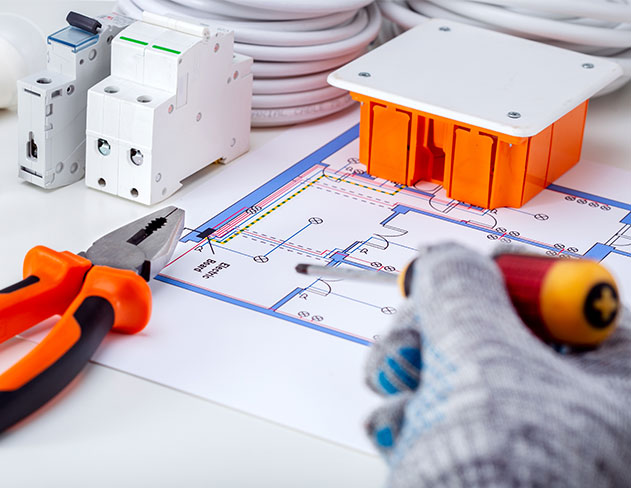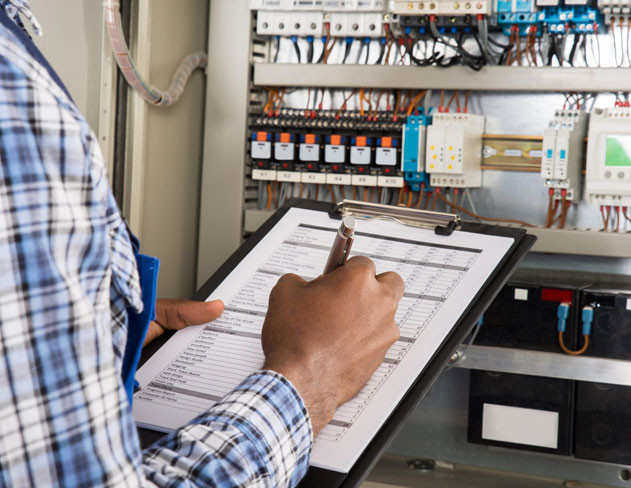How Long Does an EICR Last For
How Long Does An EICR Last?
How long your Electrical Installation Condition Report (EICR) lasts be influenced by various factors. This guide comprehensively explains how long an EICR lasts and what factors might alter its duration.
What is an EICR?
An Electrical Installation Condition Report (EICR) thoroughly examines a property’s electrical systems. The inspection identifies potential hazards, such as faulty workmanship, overloaded circuits, shock risks, fire hazards, and unsafe wiring.
The inspection culminates in an EICR certificate, which provides a detailed summary of any identified issues and recommendations for their resolution. These could range from immediate dangers that need urgent attention to less severe issues that require further investigation.
Who Needs an EICR?
While it’s a legal requirement for landlords and property managers to obtain an EICR, it’s also highly recommended for homeowners and businesses to ensure the electrical safety of their premises.
Understanding the Duration of an EICR
The duration of your EICR is determined by a qualified and competent electrician at the time of the inspection. The British Standards Institute (BS 7671) provides guidelines suggesting commercial premises undergo an EICR at least every five years.
However, the frequency of EICR inspections can vary due to factors like the type of premises, risk level, age and quality of the installation, frequency of use, adherence to manufacturer’s guidance, and the quality of maintenance undertaken.
Despite these guidelines, the most accurate determination of an EICR’s duration will come from the electrician who performs your inspection and produces your EICR report.
Factors Influencing EICR Duration
The duration of an EICR can depend on various factors, each of which can be influenced by specific conditions:
- Type of Property: Different types of properties may have varying EICR durations. For example, industrial properties with heavy machinery may require more frequent inspections than residential properties with less demanding electrical systems.
- Risk Level: Higher risk properties may need more frequent EICR checks. For example, properties with older electrical installations or those known to have had electrical problems in the past may be considered higher risk and thus require more frequent inspections.
- Age and Quality of Installation: Older or lower-quality installations may require more frequent checks, especially if their condition is deteriorating. Conversely, new, high-quality installations might extend the duration between necessary EICR checks.
- Frequency of Use: Properties with electrical systems that are frequently used, such as commercial premises or high-occupancy residential buildings, may require more regular checks to ensure safety and functionality.
- Manufacturer’s Guidance and Maintenance Quality: Regular maintenance as per the manufacturer’s guidelines can help extend the duration of an EICR. Additionally, a well-maintained system can lead to fewer electrical issues, thereby lengthening the validity of an EICR.
EICR Duration in Different Scenarios
EICR frequency recommendations can vary depending on the type of property and its specific use or environment. For a more detailed understanding, let’s consider how these recommendations apply to commercial properties, homeowners, and landlords:
- Commercial Properties: Commercial properties often require more frequent EICR checks due to the high usage of electrical systems. As per BS 7671 guidelines, an EICR every five years is recommended. However, high-risk environments such as petrol stations or environments exposed to extreme conditions like swimming pools, saunas, laundrettes, and cinemas might require annual EICR checks. On the other hand, office buildings, restaurants, and shops, which experience moderate usage, typically adhere to the five-year recommendation. However, the specifics of the electrical installation and the extent of its usage can alter this frequency.
- Homeowners: While there is no strict legal requirement for homeowners to obtain an EICR, it’s generally recommended to have one every ten years or whenever there’s a change in occupancy. This practice ensures that the electrical installation remains safe and operational. For older properties, or those with a history of electrical problems, more frequent checks might be necessary. In such instances, the inspecting electrician will provide a recommendation for the frequency of future checks.
- Landlords: For rental properties, landlords are required to have an EICR conducted every five years or with every change of tenancy, whichever comes first. This regulation is designed to ensure tenants’ safety and avoid potential legal issues for landlords. This could mean EICR checks are needed more frequently in high-turnover properties, such as student housing. However, it’s important to note that the exact frequency will depend on the electrician’s assessment of the property and its electrical installations.
Remember, these are general guidelines and the electrician conducting the EICR will provide a precise recommendation for the next check based on their assessment.
Implications of Not Renewing Your EICR
Not adhering to the recommended EICR frequency can have several implications, affecting both the safety of the property and legal compliance:
- Potential Safety Hazards: Without regular EICR checks, potential electrical faults in your system may remain undetected. These faults can lead to serious issues like electrical shocks or fires. Regular EICR testing helps in early identification of such problems, allowing for timely intervention and the prevention of accidents.
- Non-compliance with Regulations: Certain properties are legally required to have regular EICR checks in the UK. For instance, landlords and property managers must ensure their properties undergo an EICR every five years or with every change of tenancy. Failure to comply with these regulations can lead to legal penalties and could potentially invalidate your property insurance.
- Increased Costs: Failing to identify and fix electrical issues early can lead to more severe problems over time. These problems can be costly to rectify. Regular EICR checks can help identify issues early, potentially saving you significant repair or replacement costs in the long run.
- Risk to Property and Occupants: Electrical systems can deteriorate over time, posing significant risks to the property and its occupants. Regular EICRs help maintain a safe environment for everyone in the property. These checks also ensure the longevity of your electrical installations, helping maintain your property’s value.
Conclusion
The duration of an EICR depends largely on the type of property, its usage, and the environment, among other factors. As a responsible property owner, it’s crucial to adhere to the recommendations provided in your EICR report to maintain a safe and compliant electrical system.
Whether you’re a homeowner, landlord, or business owner, understanding the duration of an EICR and the factors that influence it can help you maintain a safe environment while avoiding potential legal and financial implications. For more information, visit our FAQ page or contact us directly.


